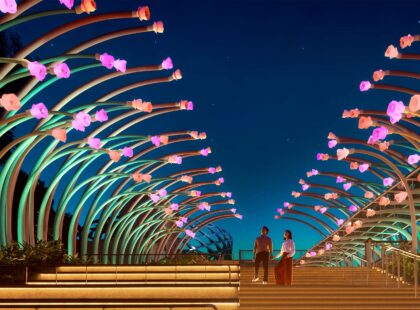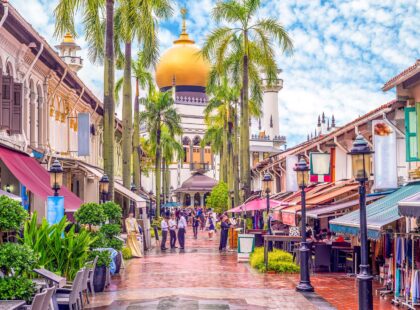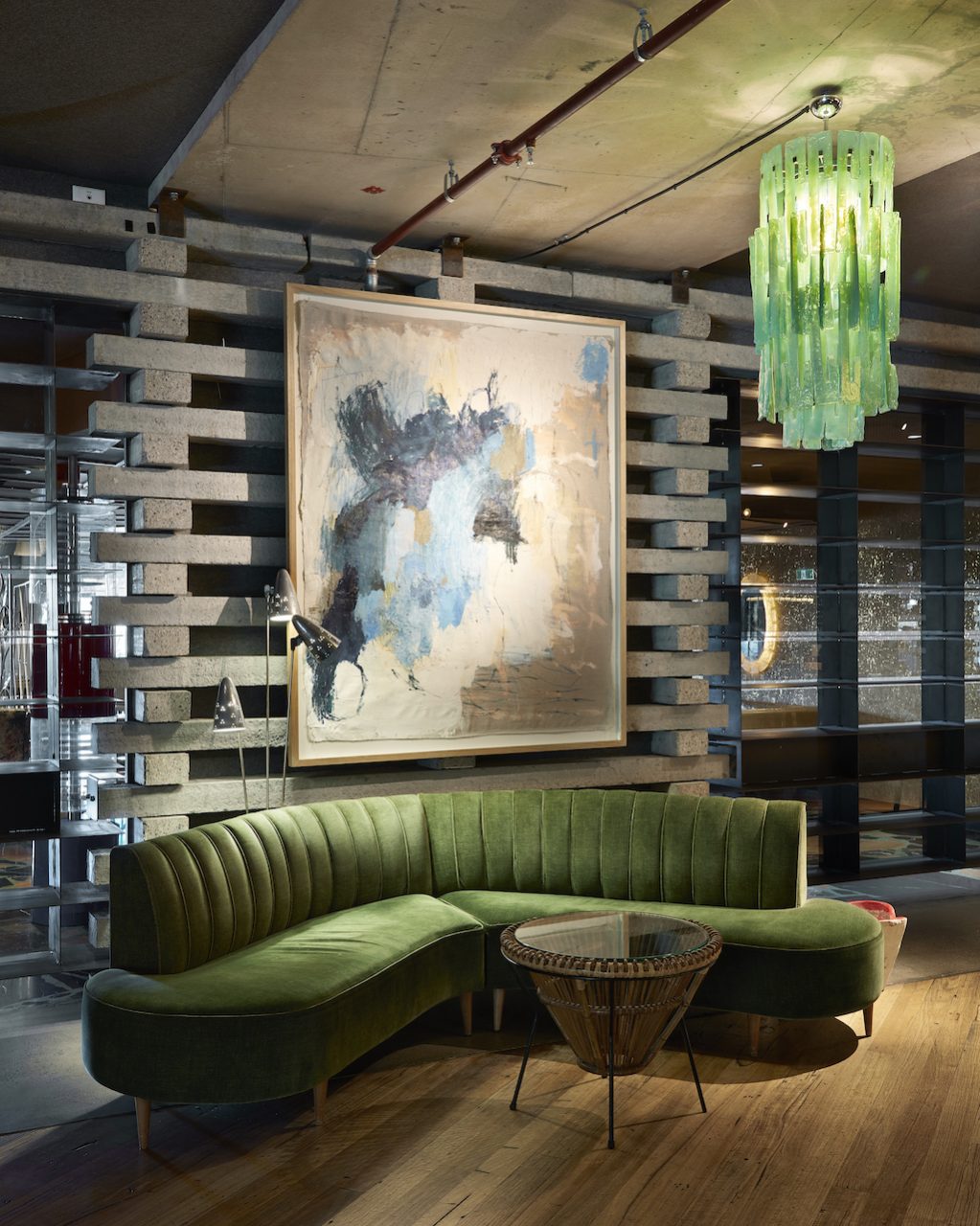
1. Considered, creative fittings in every nook and cranny
When it opened as Hotel Hotel in 2013, this boutique lodging injected a style and swagger that Australia’s strait-laced capital hadn’t really seen before. This year, the Hong Kong- and Singapore-based Hind Group took over the reins and rebranded it as Ovolo Nishi.
Thankfully, the brilliantly curated mishmash of fittings, furnishings and kitsch curiosities have remained the same – from the brass and Murano glass chandeliers that designer Anna-Wili Highfield based on the migration paths of local fauna, to the vintage chandelier salvaged from a 1930s Italian train station. There are also antique Egyptian chairs and old suitcases from Mumbai; striking custom-built open fireplaces; shabby chic French cabinets brimming with curiosities; and oodles of contemporary artwork sourced from around the globe.
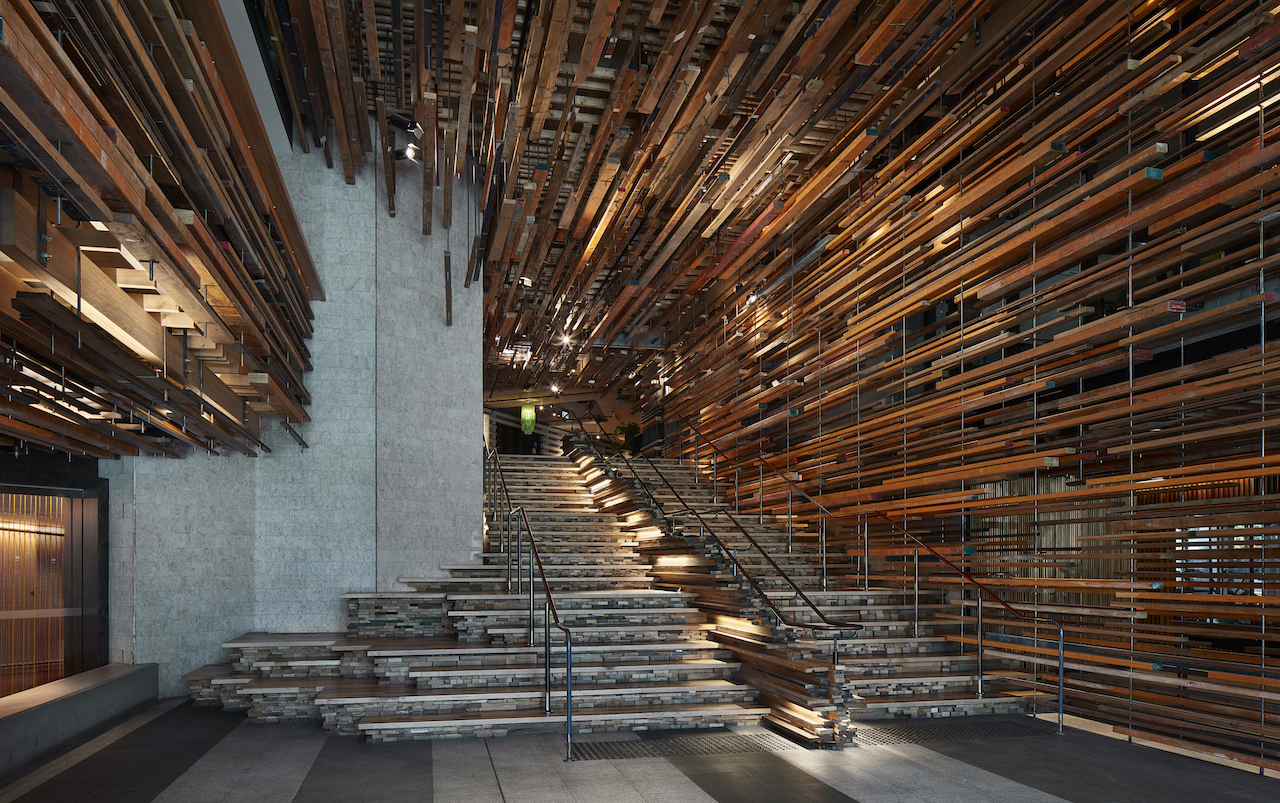
2. Set inside an architectural masterpiece
When the Nishi building first sprouted five years ago in the buzzy NewActon precinct, it soon became a symbol of the creative and cosmopolitan ambitions of the neighbourhood and its residents. Now, other than Ovolo Nishi, the little pocket is home to a contemporary art gallery, hidden speakeasies, cafés and art installations.
Conceptualised by stylishly eccentric Canberra brothers Johnathan and Nectar Efkarpidis and their Molonglo Group, a collective of over 50 top Australian architects, artisans, chefs and designers collaborated on its award-winning characteristics: origami-esque folds of concrete, a blackbutt eucalyptus façade and planters of greenery spilling down its walls.
The building’s magnum opus, though, is the spectacular staircase cascading from the hotel’s Monster restaurant down to the hotel’s main foyer – a Tetris-like jumble of more than 2,000 reclaimed timber blocks. Layers of wooden beams are suspended from the ceiling and studded on the walls, creating dramatic plays of light, shadow and texture.
3. Gentle on the environment
Designed by Fender Katsalidis Architects and landscape firm Oculus (who both worked on the Museum of Old and New Art in Tasmania), the Nishi building has won awards for its focus on sustainable design. But the eco-centric ethos goes further: all water in the building is recycled using an ozone water system, hotel rooms are fitted out with sensor lights, food is sourced locally and there’s barely any plastic packaging in sight.
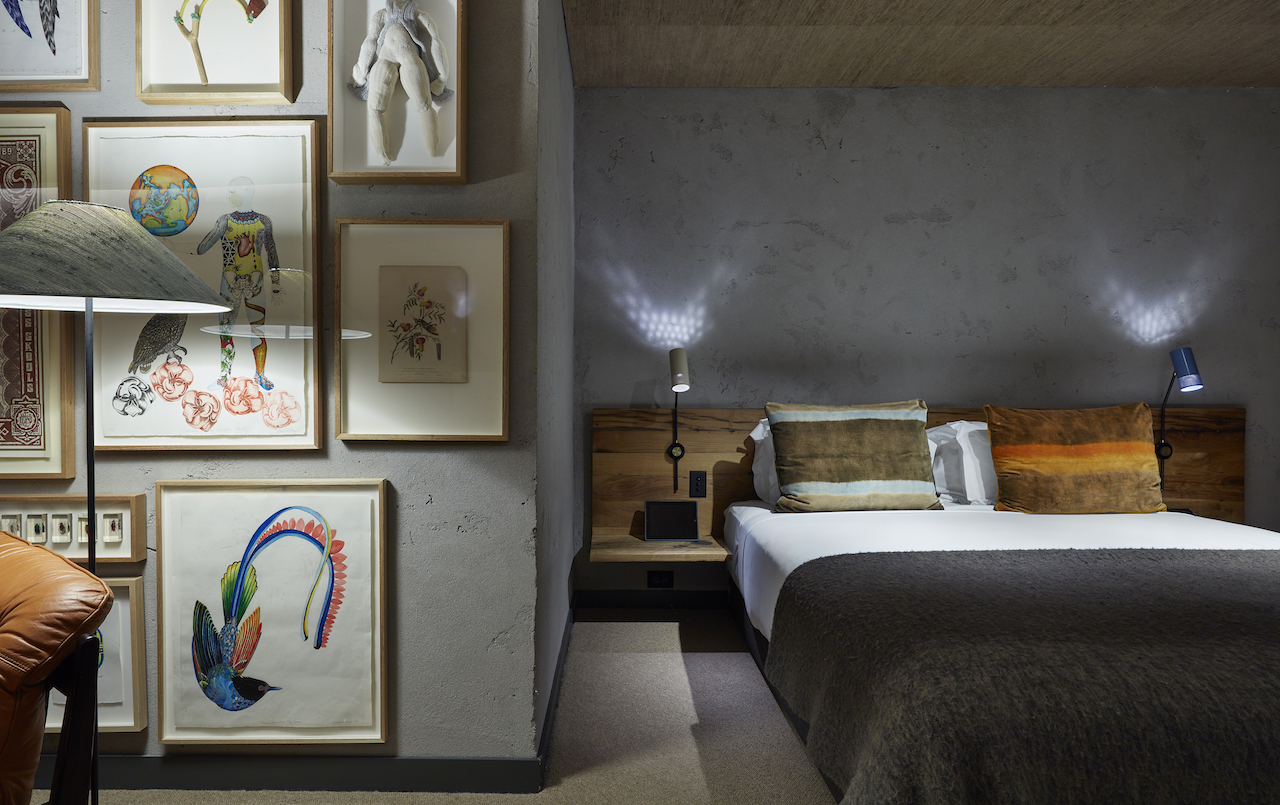
4. Spacious rooms with all the Ovolo bells and whistles
A reimagination of the Australian “bush shack”, the 68 distinct rooms are spread across the Nishi’s first two floors (levels three to 15 are dedicated to serviced apartments). There are six room types; go for the largest, a Meandering Atrium, and you’ll get a king-sized bed, a separate sitting area and a huge bathroom with a free-standing concrete tub, twin rain showers and Aesop amenities. All rooms are festooned with one-off furniture and artwork, such as technicolour wool tapestries, brass lights, buttery leather couches and salvaged oak beds. Some walls are finished with a clay render; others with eucalyptus and beeswax.
Ovolo has also upped the ante with its tech additions (Apple TVs and Amazon Alexas) as well as its “freebies”: mini-bar offerings, happy hour tapas and wine at the downstairs bar; yoga sessions; and specially commissioned Goodspeed bikes to scoot around what could be Australia’s least congested city. There’s also a library that’s well-stocked with art and design tomes.
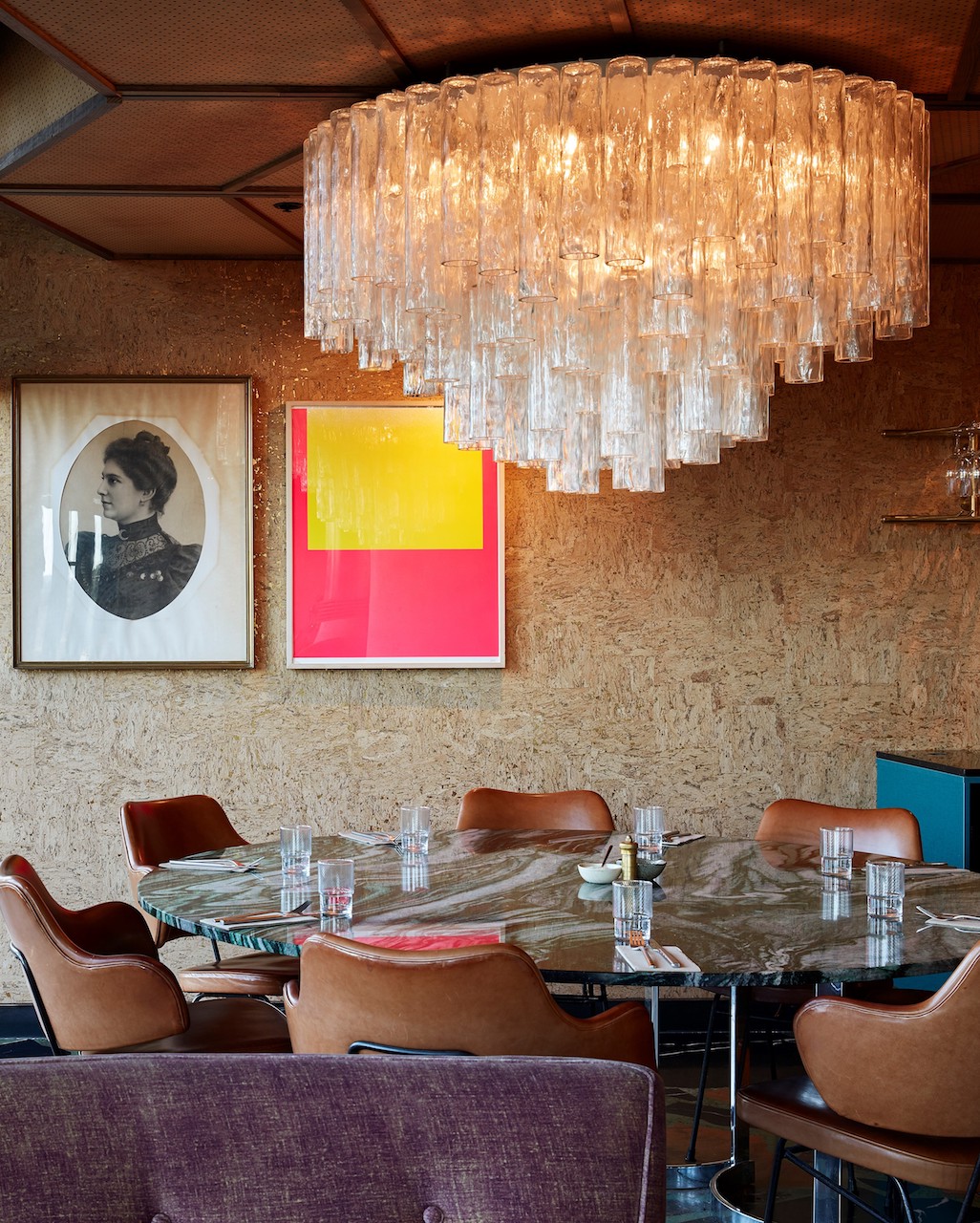
5. A secret forest saved from Tasmania
Look up at the skylights while you’re enjoying your morning coffee at Monster and you’ll be able to spy the fern garden the hotel’s designers rescued from Tasmania (it was set to be clear cut), transported and replanted. If you book a Meandering Atrium room, you’ll be able to look out at the lush oasis from the comfort of your bed.
Singapore Airlines flies to Canberra daily. To book a flight, visit singaporeair.com


